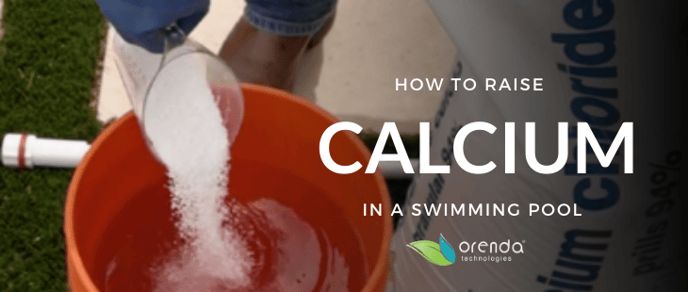How to use SC-1000
Learn how to correctly use SC-1000 Scale & Metal Control in a swimming pool. SC-1000 doses, how to add, and mistakes to avoid.
SC-1000 Scale & Metal Control is our chelating agent. It binds to metals and minerals, preventing metal oxidation and staining, and inhibits carbonate scale formation. This procedure covers different ways it can be used in your swimming pool, proper dosing instructions, and frequently asked questions (FAQs).
Related: How to Implement the Orenda Program
You may need:
- Plastic measuring cup (for liquids)
Jump to:
SC-1000 dosing
SC-1000 has two basic dosing rates: the initial purge dose, and the weekly maintenance dose.
| Type of dose | Amount per 10,000 gallons (38,000 L) |
| Purge dose | 32 fl.oz. (0.94 L) |
| Purge (high metals or well water) | 48 fl.oz. (1.4 L) |
| Weekly Maintenance | 3 fl.oz. (90 mL) |
| The Orenda Startup™ | 32 fl.oz. (0.94 L) |
NOTE: If your tap water is from a well, we recommend 1.5x the purge dose to account for the likely high metal content in the water.
How to add SC-1000
Generally speaking, just pour SC-1000 directly into the skimmer or gutter. If you have a commercial pool, or a residential pool with chemical automation, you can feed SC-1000 into the return line. Calculate the maintenance dose you need, and set the timer accordingly.
Other ways to use SC-1000
Adding calcium chloride. When pre-dissolving calcium chloride in a bucket (or the Orenda Startup Barrel™), adding a small amount of SC-1000 helps a lot. It chelates the calcium and holds it in solution. In a 5-gallon bucket, you may only need one or two ounces of SC-1000. In the Startup Barrel™, you can add half a quart per 50 pounds of calcium, or even more than that if the water temperature is cold enough. Cold water temperatures slow SC-1000 activation and can even render it dormant. So mixing it in with dissolving calcium chloride (which creates heat) can help activate SC-1000 before adding it into a cold pool.
Neutralizing chlorine. Unlike sequestering agents, which can be oxidized by chlorine over time, SC-1000 is invulnerable to chlorine. In fact, chlorine levels will be depleted quickly when adding the purge dose of SC-1000. This can be annoying, but can also be used to your advantage. Instead of using sodium thiosulfate after a hard chlorine shock, consider SC-1000 instead. We have found 8 fl.oz. (0.25 L) per 10,000 gallons reduces chlorine, but will not completely wipe out chlorine levels like the purge dose will.
Mistakes to avoid (and best practices)
- Do not purge a pool if the water temperature is below 65ºF (18.3ºC). The water is too cold for SC-1000 to activate. Consider adding it in smaller increments with calcium chloride in a bucket, so the heat from dissolving calcium allows SC-1000 to activate before pouring it into the pool.
- Do not overdose SC-1000. For the same reason listed earlier, SC-1000 will neutralize chlorine until it has had time to bind to metals and minerals. Until that time, the chlorine will attempt–and fail–to oxidize it. Stick to the 3 fl.oz./10,000 gallon weekly maintenance dose, regardless of the size of your pool. Get your accurate dose from the Orenda App, and use a measuring cup.
- Do not use SC-1000 with other sequestering agents, especially during a startup. It's not that SC-1000 is incompatible with sequestering agents, it's that they are trying to do the same thing, and you're wasting time and money. On a startup in particular, the pH differences between chemicals can be vast (most sequestrants are acidic, and SC-1000 is alkaline). Instead, stick to one product until at least 30 days after filling the pool.
